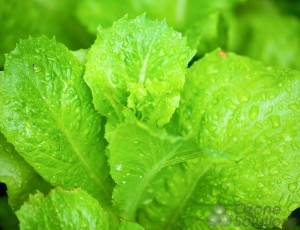 However, the sanitization operation deserves more attention than it has received. The ability of a sanitizer to reach the site of pathogens is a fundamental prerequisite for efficacy. This work addresses the transport processes of ozone (gaseous and liquid) sanitizer for decontamination of leafy greens.
However, the sanitization operation deserves more attention than it has received. The ability of a sanitizer to reach the site of pathogens is a fundamental prerequisite for efficacy. This work addresses the transport processes of ozone (gaseous and liquid) sanitizer for decontamination of leafy greens.
The liquid sanitizer was ineffective against Escherichia coli K-12 in situations where air bubbles may be trapped within cavities. A model was developed for diffusion of sanitizer into the interior of produce.
The reaction rate of ozone with the surface of a lettuce leaf was determined experimentally and was used in a numerical simulation to evaluate ozone concentrations within the produce and to determine the time required to reach different locations. For aqueous ozone, the penetration depth was limited to several millimeters by ozone self-decomposition due to the significant time required for diffusion. In contrast, gaseous sanitizer was able to reach a depth of 100 mm in several minutes without depletion in the absence of reaction with surfaces. However, when the ozone gas reacted with the produce surface, gas concentration was significantly affected.
Simulation data were validated experimentally by measuring ozone concentrations at the bottom of a cylinder made of lettuce leaf. The microbiological test confirmed the relationship between ozone transport, its self-decomposition, reaction with surrounding materials, and the degree of inactivation of E. coli K-12.
Our study shows that decontamination of fresh produce, through direct contact with the sanitizer, is more feasible with gaseous than with aqueous sanitizers. Therefore, sanitization during a high-speed washing process is effective only for decontaminating the wash water.
Physics of fresh produce safety: Role of diffusion and tissue reaction in sanitization of leafy green vegetables with liquid and gaseous ozone-based sanitizers
Journal of Food Protection, Number 12, December 2015
Mykola V. Shynkaryk, Taras Pyatkovskyy, Hussein M. Mohamed, Ahmed E. Yousef, and Sudhir K. Sastry
http://www.ingentaconnect.com/content/iafp/jfp/2015/00000078/00000012/art00001
